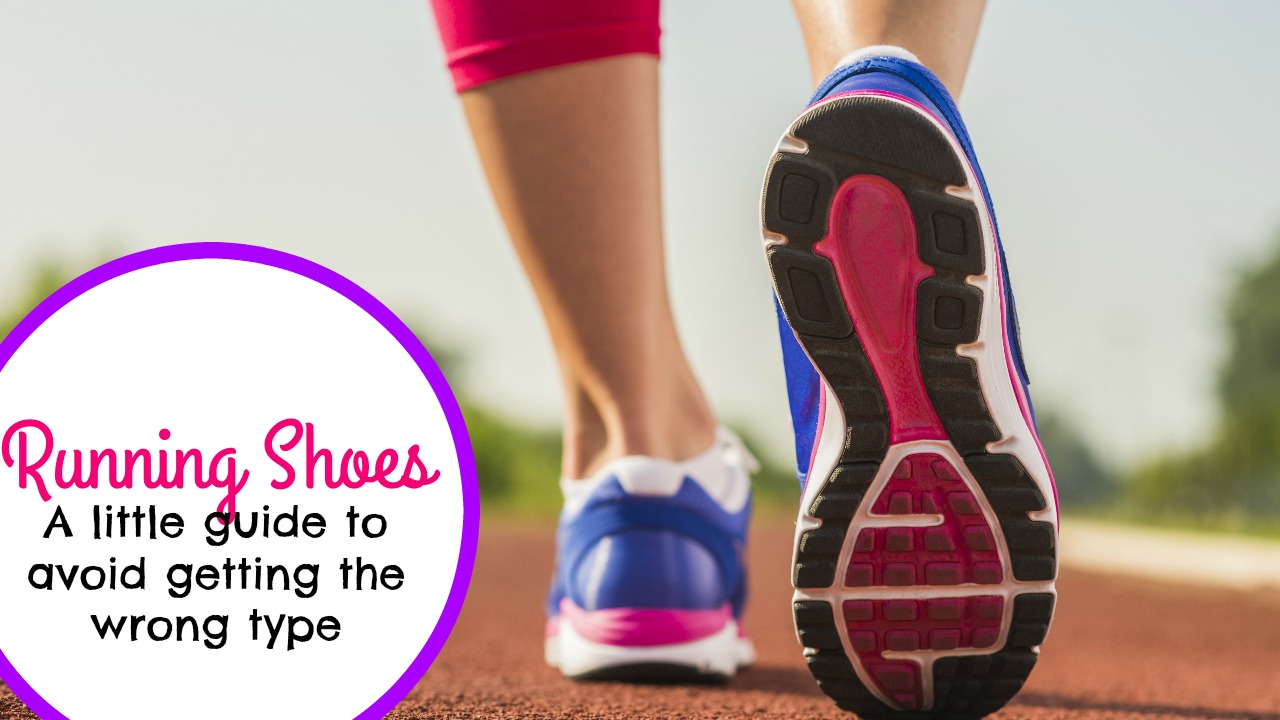20 Jul A little guide to avoid getting the wrong Running Shoes!
This is a guest post by Ruggero from Running Shoes Guru. I had the pleasure to be featured on a recent Huffington Post article together with Ruggero, and I am super happy he wrote an article for me to share with you all on how to pick the right running shoes!
A little guide to avoid getting the wrong Running Shoes!

Running is simple. Left foot, right foot, repeat. The only specific sport equipment you’ll need to run properly is a good pair of running shoes.
Do you really need running shoes?
Trust me on this. You “technically” could run in basketball shoes, in stilettos or even barefoot. But if you take your running (and your health) seriously, you should invest in a pair of shoes that is meant for the running gait (stride) and the specific biomechanics of a runner.
There are some things, such as grip and protection: a tennis shoe is meant for sliding over clay or grass, not to propel you forward for miles, going from pavement to grass to the occasional puddle.
The most important design elements of a running shoe, though, are the ones relative to promoting a correct gait and helping you absorb some of the impact with the ground, which is what eventually leads to joint overuse and injury.
Do you need to spend a lot of money for your running shoes?
In all honesty, no. Top-shelf running shoes start at $100 and go all the way to $200. They are indeed better than the cheaper alternatives, being usually lighter in weight and made of premium materials that last longer and protect you better.
But you can find (very easily online) a last year version of a top of the range shoe for close to half the price. I recommend this rather than buying the cheapest shoes you can find. If you are curious why cheap running shoes could be bad for you, take a look at this video.
The most important aspect to consider when shopping for running shoes
Let’s start from the most essential aspect of a pair of running shoes: how they fit.
There is nothing worse than running in a shoe that is too small (no, they won’t “give in and feel better”) or too big, or with a heel that rubs and blisters you or that is too narrow etc. Take the time to try both shoes on and if possible have a little run in the shop or on a treadmill.
Here are some more suggestions about finding the right fit:
- Make sure the heel is not slipping. The shoe should not be small, but if your heel keeps slipping out, you need to revisit your lacing or choose a different shoe
- When checking for the size, wear the same kind of socks you will be using for running and leave half a centimeter or space between your big toe and the end of the shoe. Feet swell during exercise and a shoe that is “just right” in the shop, will most likely feel too small during a run
- Lace them tight so that they don’t move around, but not so tight that you cut off circulation.
- Breathability: make sure you choose a shoe that matches the weather you are planning to run in. Open mesh helps you cool your feet especially in hot climates, but you wouldn’t want it if you run in cold winter mornings.
Traditional running shoe categories
Since the past two decades, runners have been split into different categories depending on their pronation. The collapsing of the arch (pronation) is your body’s natural way of absorbing the shock of the impact with the ground. Pronation is good.
Sometimes runners pronate too much, meaning they have a flat arch and the foot rolls inward excessively while running and sometimes they don’t pronate enough, with an arch that does not collapse at all.
Traditional running shoe categories are Cushioning (or neutral) and Stability (or Support).
- Cushioning running shoes are for runners who don’t pronate enough (under pronators). These shoes have softer materials in the midsole (be it Air, or Gel or a softer EVA foam) to help the runner absorb the shock.
- Stability running shoes are for the runner who pronates excessively, with an arch that collapses almost entirely. Stability shoes are meant to provide the foot with support that helps the runner’s foot to keep to the ideal gait line and most stability shoes use a feature called “dual density foam”, which is visible by a darker insert of foam (usually grey) in the medial – or internal – side of the sole of the shoe. This harder foam compound is placed right under the ankle and prevents it to collapse.
There’s much more than that, though!
In the past 5 years or so, many new categories of shoes appeared: minimalist, barefoot, maximal… we review more than 100 pairs of shoes each year and there are at least as many out there that we don’t have time to test.
I recommend you stick to a basic, traditional running shoe if it’s your first purchase, and explore “new territories” once you have a base to compare with.
Once you get caught up in a serious running shoe collection, the tendency is to take it as far as possible…
Summary: how to choose the right running shoes for you
First of all, make sure you are looking at running shoes. Select a “cushioning” pair if you have high arches or a “stability” one if you have low to flat arches. You might even stop caring about the height of your arches and go minimal, buying a running shoe that is as bare as possible. Beware though, be very cautious and listen to your body: injury is behind the corner.
Once you decided what kind of running shoe you want, try them on. Make sure it fits perfectly and doesn’t hurt anywhere, even when tied snugly.
Some people are brand loyal some other enjoy trying a new running shoe every few months. Running shoes are designed to last approximately 400 miles. With a weekly mileage of 20 miles (plenty for a beginner) you can expect to get 5-6 months of running out of your running shoes. Not a bad return per investment!
If you need help, come visit the shoe wizard and we’ll help you find a pair that suits you!
 Ruggero Loda founded Running Shoes Guru in 2009 with the aim of helping runners and runners-to-be of any gender, level and shape to find the right running shoes. As a running shoe industry veteran (Nike, Reebok) and a keen runner and triathlete, Ruggero has a shoe addiction/obsession and knows how confusing it is to find a right pair when there are so many available!
Ruggero Loda founded Running Shoes Guru in 2009 with the aim of helping runners and runners-to-be of any gender, level and shape to find the right running shoes. As a running shoe industry veteran (Nike, Reebok) and a keen runner and triathlete, Ruggero has a shoe addiction/obsession and knows how confusing it is to find a right pair when there are so many available!
